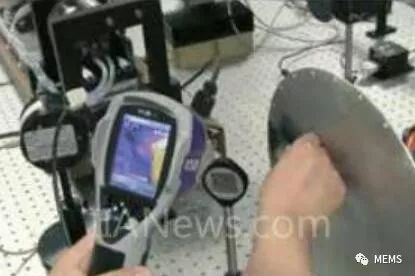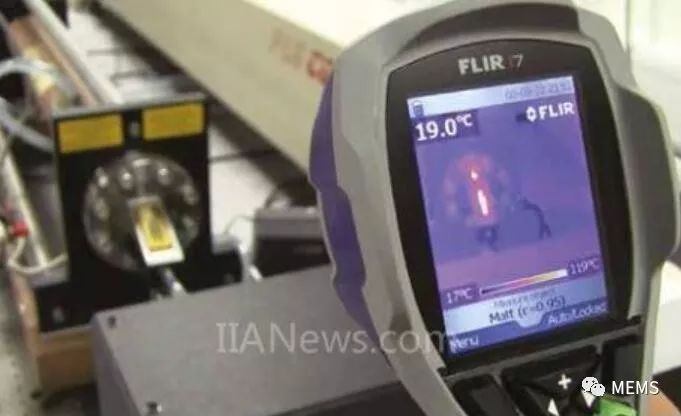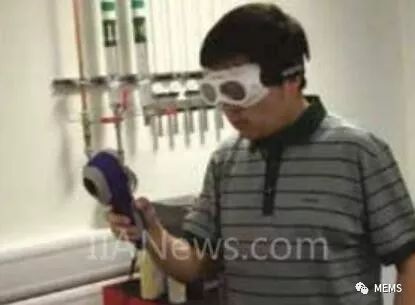The emitted lasers are dangerous because some lasers produce invisible infrared beams that may harm researchers or cause fires. The laser room of the University of Glasgow uses FLIR i7 thermal imaging cameras to ensure its own safety when using terahertz laser research devices. Yong Ma, a research assistant in the Microsystem Technology Research Group at the University of Glasgow’s School of Engineering, explained: “The laser system in our laboratory produces invisible high-intensity infrared laser radiation. These invisible beams may be dangerous to researchers, which may not be necessary. I explain. We will wear goggles to prevent eye damage; but if the invisible light beam touches our clothes or skin, it may cause serious personal injury. Therefore, we need safety equipment to determine these invisible light beams. At this time We need to use the FLIR thermal imaging camera." To ensure the safety of the researchers, Ma explained: "Every time I use the terahertz laser research device, I always use the FLIR i7 thermal imaging camera to scan the entire area to detect the infrared laser beam. Is the projection direction wrong to ensure safety. However, this is not the only application environment where I use the FLIR i7 thermal imaging camera. I also use it to monitor the over-temperature of electrical equipment, gas valves, gas pipes and gas tanks." Ma continued: "The invisible terahertz laser beam is generated in two steps. The first step is the CO2 mid-infrared laser system. This system generates a 50 watt infrared laser beam with a wavelength of 10.6 microns. This conventional infrared laser beam is The compressed methanol channel is converted into a terahertz laser beam. The resulting terahertz laser has an intensity of 150 milliwatts and a wavelength frequency of 119 microns."

The heat generated by the invisible infrared laser beam appears on the thermal image

Ma uses the FLIR i7 thermal imaging camera to calibrate the optical components in his research device. The terahertz infrared laser beam generated by the invisible infrared beam "showing" is considered to be a Class 4 laser that meets the requirements of safety regulations, which requires laboratory operators to wear safety goggles. Therefore, visualizing the invisible laser is essential to ensure the safety of the device. Ma said: “For this, we use the FLIR i7 thermal imaging camera because this thermal imaging camera is cost-effective. Its micro thermal detector is not designed to detect infrared radiation at terahertz wavelengths. Terahertz lasers produce infrared radiation. The wavelength frequency of the beam is 119 microns, while the FLIR i7 thermal imaging camera has a wavelength range of 7.5-13 microns." Ma continued: "This means that the FLIR i7 thermal imaging camera does not directly detect the beam. However, if When the infrared beam generated by the terahertz laser touches an object or surface, it will heat up. With the FLIR i7 thermal imaging camera, this kind of heating can be detected very easily. I use this principle to ensure that there is no stray The infrared beam leaked from the device."

FLIR i7 ensures the safety of researchers by visualizing the heat generated by the invisible infrared laser beam

Research assistant Yong Ma demonstrates the usage of FLIR i7 thermal imaging camera in laser room
Calibrating optical equipment In order to direct the invisible terahertz infrared laser beam to a specific target, Ma uses a large number of different infrared lenses and mirrors. However, aiming at an invisible laser beam is somewhat challenging. This is another reason why he uses the FLIR i7 thermal imaging camera. Ma said: "Before I had the FLIR i7 thermal imaging camera, I used thermal paper; when the thermal paper became hot, it would change color to detect terahertz. The infrared beam is used to calibrate the optical components, but the method is not accurate enough and the speed is slow. With the FLIR i7 thermal imaging camera, I can more accurately detect the infrared beam and calibrate the optical components of the device.†According to Ma, the purpose of the research project In the development of a terahertz imaging system that can be used in a large number of application environments. "The terahertz region of the electromagnetic spectrum lies between the microwave and mid-infrared regions. This region is usually determined by the frequency range of 0.1-10 MHz. It is one of the least explored ranges in the electromagnetic spectrum. However, it is used in science, Security and medicine have shown great application potential. It is safer than x-rays or ultrasound, Ma continued: "Compared with other types of infrared radiation, terahertz infrared radiation penetrates more deeply in most materials. It can penetrate many media materials, such as clothes, cartons, plastic bags, and even human tissues. However, even if it can penetrate deep into the human body, it is still non-ionizing radiation. Therefore, it is safer than traditional methods such as x-rays and ultrasound in medical scans. "Ma thinks there may be many application environments." The non-invasive nature of terahertz radiation makes it an ideal choice for medical application environments, but it can also be used in fields such as spectral analysis, security, and high-speed communications. Terahertz spectroscopy can provide new information in chemistry and biochemistry, and medical scans using terahertz infrared imaging technology can non-invasively identify the focus of certain types of diseases, such as skin cancer. "Search for explosives or poison Ma said: "It can also be used to strengthen airport security checks. Terahertz imaging technology can be used to search for objects hidden under clothing, cartons and plastic bags, such as explosives or weapons. Many chemical or biological materials, such as explosives or poisons, have special fingerprint spectral absorption in the terahertz region. Therefore, by using the terahertz spectral fingerprint of explosives or poisons, we can identify explosives or poisons. Ma said that in modern communication systems, terahertz radiation is also very useful. "Terahertz communication systems have the potential to provide wider bandwidth, more directional transmission (very useful for reducing antenna size), and safer information. Communication (thanks to the shorter transmission distance)". At present, terahertz imaging technology is a relatively small part of electromagnetic spectrum development. "Our laboratory's terahertz research focuses on terahertz optical component manufacturing and system integration. We aim to improve the performance of terahertz imaging systems in the medical and security fields, and reduce related costs. The FLIR i7 thermal imaging camera helps us achieve this goal safely and accurately. "
Incremental encoders provide speed, direction and relative position feedback by generating a stream of binary pulses proportional to the rotation of a motor or driven shaft. Lander offers both optical and magnetic incremental encoders in 4 mounting options: shafted with coupling, hollow-shaft, hub-shaft or bearingless. Single channel incremental encoders can measure speed which dual channel or quadrature encoders (AB) can interpret direction based on the phase relationship between the 2 channels. Indexed quadrature encoders (ABZ) are also available for homing location are startup.
Incremental Encoder,6Mm Solid Shaft Encoder,Hollow Rotary Encoder,Elevator Door Encoder
Jilin Lander Intelligent Technology Co., Ltd , https://www.jilinlandermotor.com